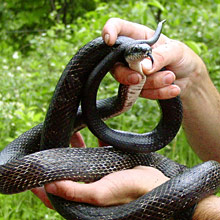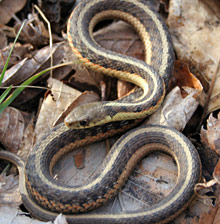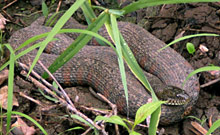- HOME
- » PEST SOLUTIONS
- » Snakes
Snakes
How to deal with snakes
 |
|
Black rat snake. Photo by James Henderson, Golden Delight Honey, Bugwood.org. |
 |
|
Garter snake. Photo by David Cappaert, Michigan State University, Bugwood.org. |
 |
|
Northern water snake. Photo by John Triana, Regional Water Authority, Bugwood.org. |
If they’re inside, figure out how they’re getting in and exclude them. Make sure your foundation is crack-free and repair any holes in your siding. This will solve other pest problems too. Outside, tolerate them as much as you can. They’re doing little harm, eating bugs or mice that could be pests. If you don’t want them doing good deeds on your property, alter the habitat—for example, keep woodpiles distant from buildings and plant things (trees come to mind) that don’t provide ground-level shelter.
What they look like
Legless and long in a variety of browns, greens, reds, and yellows, depending on which kind. As they get older they get longer. You’ll likely find their shed skins (papery, with no color) in favorite areas—by the holes they travel through.
Where they live
Home base is usually a damp, dark, cool area. Woodpiles, stone walls, and under tarps are favorite hangouts.
What they do
They track down other pests to eat—birds, mice, frogs, and bugs could all be dinner. When they’re not eating they rest in spots that keep their body temperature just right. If it’s hot out they’ll be where it’s cool. If it’s cool, they’ll be basking in the sun. Since snakes don’t create holes—they use holes their prey made—if you’ve got a snake inside, you’ve probably got another pest too.
Resources
See results from the Northeastern IPM Center’s resources database.
